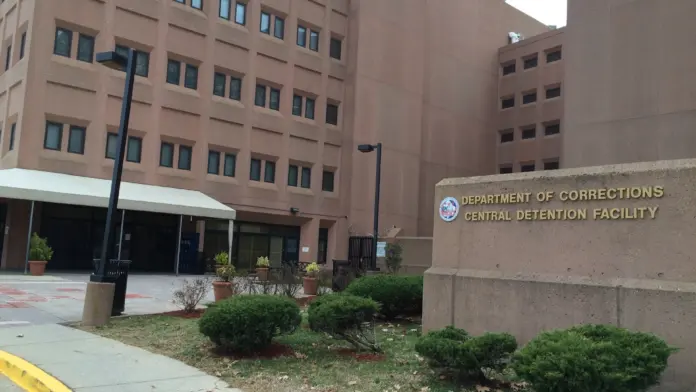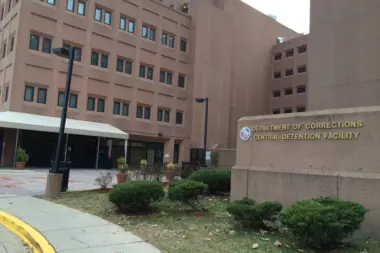About DC Central Detention Facility
DC Central Detention Facility in Washington, D.C., is also known as the DC Jail. They have been in operation since 1976. They primarily house male residents who are awaiting trial or serving sentences for misdemeanor offenses. In 2002, the United States District Court lifted the population capacity limit imposed in a previous court ruling. In 2007, the facility’s capacity was set at 2,164 inmates, in compliance with the Jail Improvement Act of 2003.
The Treatment Facility
Their female inmates are housed at the Correctional Treatment Facility (CTF). Their convicted felons are transferred to the Federal Bureau of Prisons. This transfer happens due to the National Capital Revitalization and Self-Government Improvement Act of 1997.
The CTF was established in 1992 as a medium security facility. The facility consists of five interconnected multi-story buildings on a 10.2-acre site. Each building houses different areas for administration, housing and programs.
The facility is designed to provide a secure environment with windows in each room. There’s access to television rooms, multi-purpose rooms and recreation yards. Their housing units have a maximum capacity of 96 beds. They range from 16 to 48 cells.
Halfway House
The community corrections facility program includes the Fairview Halfway House. This halfway house is for women and is privately operated. Fairview provides an alternative to incarceration for pretrial offenders and individuals convicted of misdemeanors.
Women can receive case management, behavioral health counseling and GED preparation. Job readiness and substance abuse interventions will also be available.
I like that you’ll also obtain vital record replacements and your voter registration. Their staff will help you with employment assistance and financial literacy. Among the services you receive is education on HIV/AIDS.
Rehab Score
Gallery


Other Forms of Payment
Private insurance refers to any kind of healthcare coverage that isn't from the state or federal government. This includes individual and family plans offered by an employer or purchased from the Insurance Marketplace. Every plan will have different requirements and out of pocket costs so be sure to get the full details before you start treatment.
Self-pay involves paying for treatment out of your own pocket. You can use savings or credit, get a personal loan, or receive help from family and friends to fund your treatment. If you don't have insurance or your insurance plan doesn't cover a specific program, self-pay can help ensure you still get the care you need.
Medicare is a federal program that provides health insurance for those 65 and older. It also serves people under 65 with chronic and disabling health challenges. To use Medicare for addiction treatment you need to find a program that accepts Medicare and is in network with your plan. Out of pocket costs and preauthorization requirements vary, so always check with your provider.
Medicaid is a state based program that helps lower-income individuals and families pay for healthcare. Medicaid covers addiction treatment so those enrolled can use their coverage to pay for rehab. When a program accepts Medicaid the client often pays very little or nothing out of their own pocket.
Addiction Treatments
Levels of Care
Residential treatment programs are those that offer housing and meals in addition to substance abuse treatment. Rehab facilities that offer residential treatment allow patients to focus solely on recovery, in an environment totally separate from their lives. Some rehab centers specialize in short-term residential treatment (a few days to a week or two), while others solely provide treatment on a long-term basis (several weeks to months). Some offer both, and tailor treatment to the patient's individual requirements.
During detox, 24-hour clinical care provides the supervision you need to safely and comfortably withdraw from addictive substances. A team of professionals including medical staff and counselors will be available to meet your physical and emotional needs. Treatments may include counseling, medications, and nutritional supplements.
Treatments
Mental health rehabs focus on helping individuals recover from mental illnesses like bipolar disorder, clinical depression, anxiety disorders, schizophrenia, and more. Mental health professionals at these facilities are trained to understand and treat mental health issues, both in individual and group settings.
Programs
Adult rehab programs include therapies tailored to each client's specific needs, goals, and recovery progress. They are tailored to the specific challenges adult clients may face, including family and work pressures and commitments. From inpatient and residential treatment to various levels of outpatient services, there are many options available. Some facilities also help adults work through co-occurring conditions, like anxiety, that can accompany addiction.
Clinical Services
Group therapy is any therapeutic work that happens in a group (not one-on-one). There are a number of different group therapy modalities, including support groups, experiential therapy, psycho-education, and more. Group therapy involves treatment as well as processing interaction between group members.
In individual therapy, a patient meets one-on-one with a trained psychologist or counselor. Therapy is a pivotal part of effective substance abuse treatment, as it often covers root causes of addiction, including challenges faced by the patient in their social, family, and work/school life.
Amenities
-
Private Setting
Contact Information
1901 D Street SE
Washington, DC 20003